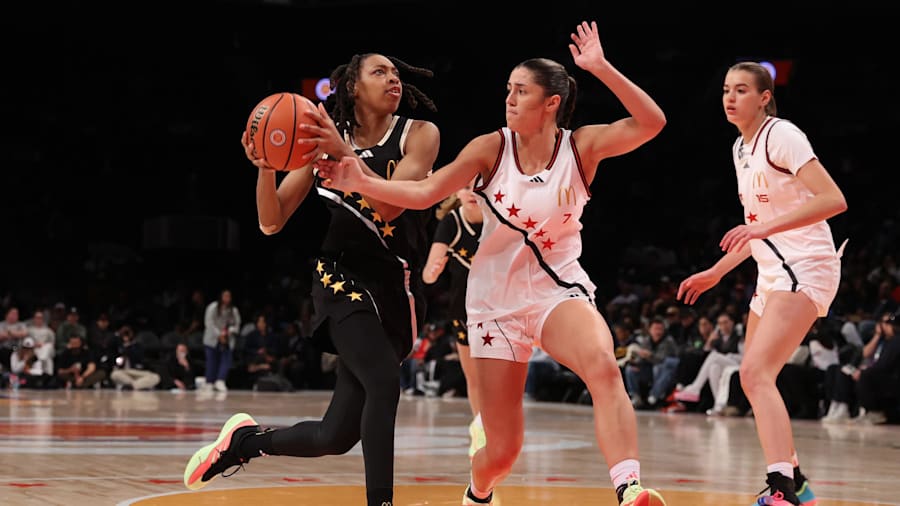Effect of Social Anxiety Disorder on Specialty Choice Among Residents and Interns in Saudi Arabia: A Multi-Center Cross-Sectional Study
Following the completion of their undergraduate medical degree, professionals might pursue postgraduate medical education to further their training in a particular speciality that aligns with their personality traits.1,2 The process of selecting a specialty is complex and involves a number of variables, including the student’s personality, abilities, clinical exposure and experience, social and familial background, and the financial appeal of several specializations.3,4 By figuring out these characteristics, students may be better able to comprehend why they are drawn to a particular specialty and feel more satisfied with their selections. Among them, anxiety disorders, particularly social anxiety disorder, and self-esteem are regarded as significant variables that can influence the selection process and so cannot be disregarded.5
Social Anxiety Disorder (SAD), formerly known as social phobia, is characterized by an intense fear or anxiety about one or more social situations in which the person is subject to observation by others. These situations include social interactions, being observed, and performing in front of others.6 The dread of speaking was the most often reported symptom of SAD.7 SAD can happen anywhere in public where a person feels watched and evaluated by others.8 Different cognitive and physical signs of anxiety, such as blushing, tremors, increased sweating, and tachycardia, will manifest in different people and are characterized by autonomic activation.9
The medical field is extremely demanding, and medical professionals who suffer from social anxiety may find the rigidity of daily routines to be psychologically taxing.10
Any career, including the medical field, can be negatively impacted by social anxiety disorder. Many researches on social anxiety disorder in medical students are being conducted in the West and other Eastern nations.11 It has been observed that students who are female12 and single,13 as well as those who have no partner,14 are more likely to suffer from social anxiety disorder.
In the context of Saudi Arabia, cultural and societal norms may significantly influence the expression and prevalence of social anxiety disorder. Traditional gender expectations, such as the conservative roles assigned to men and women in social and professional settings, may contribute to heightened anxiety—especially among female trainees who may face additional scrutiny or limited opportunities in certain specialties.15,16 Moreover, hierarchical medical training structures and emphasis on seniority in clinical decision- making may amplify performance-related stress among interns and early-stage residents.16 These factors, combined with a strong emphasis on community and reputation within Saudi society, could make social anxiety more pronounced and directly impact specialty selection compared to Western contexts.17
An investigation on the impact of social stress and social anxiety on decision-making revealed that, although anxiety leads to risk-averse decisions, stress promotes risk-taking.18 As a consequence of stress in medical school, the careers of students with social phobia might be significantly influenced by behaviors and decisions based on avoidance of stressful situations.4 Recent research has increasingly recognized the role of social anxiety in shaping medical students’ behavior, academic performance, and career preferences.19 For instance, studies from the Middle East and Asia have reported high rates of social anxiety among medical trainees, often linked to academic stress, social expectations, and limited mental health support systems.20,21 Despite this, there remains a scarcity of research specifically examining how SAD may influence specialty choices in the context of Saudi Arabia, where cultural and educational factors may amplify the impact of anxiety on decision-making. This study aims to assess the effect of social anxiety disorder on the specialty’s choice among residents and interns in Saudi Arabia.
A multi-center cross-sectional analytical study was conducted among resident doctors and interns in Saudi Arabia. The study received ethical approval from the Institutional Review Board (IRB) of King Khalid University. All authors provided informed consent and our study was done according to the declaration of Helsinki.
Consecutive sampling technique was used. Residency program rosters were obtained through official collaboration with training institutions, and participants were selected using computer-generated random numbers. Stratification was based on the level of training (interns, R1–R5 residents) to ensure balanced representation across experience levels.
A total of 450 eligible participants were initially invited to take part in the study via institutional communication channels such as WhatsApp groups, Telegram, and official university Email lists, after obtaining the required permissions from program coordinators. The study was voluntary and anonymous, with informed consent obtained digitally prior to participation. A total of 196 participants completed the survey, resulting in a response rate of 43.6%.
An online self-administered questionnaire was developed by the research team after reviewing relevant literature and consulting with experts. The questionnaire was validated for content, clarity, and reliability by three independent academic experts. It comprised three parts:
Demographic and academic data (eg, gender, level of training, preferred specialty). A binary item asking whether fear of social situations influenced specialty choice.
The Social Interaction Anxiety Scale (SIAS), a validated tool comprising 20 items rated on a 5-point Likert scale, used to assess levels of social anxiety. A total score ≥36 was used as the cutoff for identifying clinically significant social anxiety.
Data were collected over a 7-week period from July 12 to September 2, 2023. This period was selected to coincide with the academic schedule when most interns and residents were actively engaged in their clinical training and available for survey participation.
Data were analyzed using IBM SPSS Statistics, version 21. Descriptive statistics were used to summarize participant characteristics, specialty preferences, and SIAS responses. The SIAS total score was calculated, and a score of ≥36 was considered indicative of significant social anxiety. Chi-square tests and exact probability tests were used to assess associations between variables, with a p-value ≤ 0.05 considered statistically significant.
A total of 196 interns and residents were included in the study. Of them, 99 (50.5%) were females and 97 (49.5%) were males (Table 1). Regarding training level, 32 (16.3%) were interns, 36 (18.4%) were R1 residents, 57 (29.1%) were R2 residents, 50 (25.5%) were R3 residents, and 21 (10.8%) were R4 and R5 residents.
 | Personal Characteristics and Speciality Preference Among Study Participants (n=196) |
The SIAS scores among participants ranged from 0 to 78, with a mean score of 26.2±24.7 (Table 2). Based on a cutoff score of 36, a total of 63 participants (32.1%) were found to have significant social anxiety, compared to 133 (67.9%) without. Social anxiety was more prevalent among females (34.3%) than males (29.9%), although this difference was not statistically significant (P =0.505).
 | Social Interaction Anxiety Scale (SIAS) Score by Different Specialties Among Study Participants |
Detailed SIAS item responses revealed that 63.8% of respondents had difficulty talking to attractive persons of the opposite sex (Figure 1). High levels of social discomfort were also reported for disagreeing with others (61.2%), speaking about themselves (58.2%), being alone with just one person (57.7%), mixing socially (56.6%), speaking to authority figures (56.6%), and making eye contact (56.1%). On the other hand, the least reported symptoms included worry about appearing awkward (45.9%) and feeling tense when meeting acquaintances on the street (45.4%).
 | Distribution of responses to the Social Interaction Anxiety Scale (SIAS) among medical interns and residents in Saudi Arabia (n = 196). Each item reflects a specific aspect of social anxiety, with responses distributed across five levels: Not at all, Slightly, Moderately, Very, and Extremely characteristic or true of the respondent. The items are listed in descending order based on the percentage of participants selecting “Very” or “Extremely” characteristic, highlighting the most prominent social anxiety traits. Adapted from Behaviour Research and Therapy, volume 36 (4), Mattick RP, Clarke JC. Development and validation of measures of social phobia scrutiny fear and social interaction anxiety11Editor’s note: This article was written before the development of some contemporary measures of social phobia, such as the Social Phobia and Anxiety Inventory (Turner et al., 1989). We have invited this article for publication because of the growing interest in the scales described therein. S.T., Pages 455-470, copyright 1998, with permission from Elsevier.22 |
Despite the presence of anxiety indicators, many participants also reported ease in social interactions: 88.3% found it easy to make friends their own age, and 80.6% felt at ease in settings like parties.
A total of 47 participants (24%) reported that fear of social settings or confrontation influenced their choice of medical specialty, while 76% stated it did not. Among those who reported such fear, 78.7% were identified as having social anxiety compared to 17.4% of those who did not report fear as an influencing factor (P =0.001).
The most preferred specialties were surgical subspecialties (31.1%)—notably ophthalmology (5.6%) and orthopedic surgery (5.6%)—followed by medical subspecialties (19.9%) such as neurology, preventive medicine, and urology (each 3.6%). Other preferences included psychiatry (12.8%), general surgery (6.6%), and paramedical specialties (4.6).
When stratifying SIAS scores by specialty, the highest mean anxiety scores were found among those preferring pathology (74.5), anesthesiology (66.8), radiation oncology (65.0), diagnostic radiology (64.9), and physical medicine and rehabilitation (63.0). The lowest SIAS scores were reported among those preferring pediatric surgery (2.5), obstetrics and gynecology (4.5), cardiac surgery (4.7), and plastic/reconstructive surgery (6.2).
Social anxiety was significantly higher among interns (59.4%) compared to residents (33.3% for R1 and 35.1% for R2), with no cases among R5 residents (P =0.001) (Table 3). Fear-related specialty choice was significantly more common among paramedical (88.9%), radiology (69.2%), and ER/critical care (56.5%) specialties (P =0.001), whereas no fear-based decision-making was reported among general surgery trainees. Similarly, 46.9% of interns acknowledged fear affecting their specialty choice versus none of the R5 residents (P =0.008). A strong statistical association was found between social anxiety presence and both training level and preferred specialty (P =0.001) (Table 4).
 | Distribution of Social Anxiety Among Study Residents and Interns, Saudi Arabia |
 | Distribution of Fear of Social Contacts Among Study Residents and Interns, Saudi Arabia |
Medical expenses and care quality are significantly impacted by the structure of the physician labor market. Public health and patient satisfaction with medical care are both impacted by the market structure. A speciality imbalance can result in a variety of issues. According to Chang et al,23 the reluctance of young physicians to select some specialties due to their social fear results in a shortage of workers in certain fields, ages the physician population, creates a skills gap in medicine, hinders experience transfer, and degrades the standard of treatment.24
The current study aimed to investigate the effect of social anxiety disorder on the specialty’s choice among residents and interns in Saudi Arabia. The study showed that the most preferred included surgical subspecialties, followed by medical subspecialties, psychiatry, General surgery, and Paramedical specialties. This indicates high preference for popular specialties which needs direct contact with patients and communications skills mainly with critical cases and dealing with emergency decisions.
Regarding participants’ speciality preference considering fear of being in a social setting or the fear of confronting people was reported among only one-fourth of the participants and this explains high preference rate for popular specialties. This was more confirmed by that about one-third of the participants had significant criteria of social anxiety.
Difficulty talking to attractive persons of the opposite sex, difficulty to disagree with another’s point of view, being tense if have to talk about themselves or their feelings, feeling tense if being alone with just one other person, being uncomfortable when mixing socially, get nervous if they have to speak with someone in authority with other factors were reported by more than half of the participants. On the other hand, the vast majority find it easy to make friends my own age and at ease meeting people at parties. This estimated social anxiety disorder was higher that what reported among Saudi adults(13%).25 Another study assessed higher level among Saudi adolescent school boys (48.9%).26 A study by Al-Hazmi BH et al,27 in Taibah university showed that 13.5% of medical residents had social anxiety disorder. Another study from Saudi Arabia found sever SAD among 19.1% and very severe SAD among 19.8% of medical students.17 A much higher prevalence was reported by Salina M et al,28 where 56% of the medical students scored high on Social Phobia Inventory.
While our findings suggest a significant association between higher social anxiety scores and preference for specialties involving less interpersonal interaction, it is important to recognize that other contributing factors were not explored in this study. For example, lifestyle considerations such as fewer night shifts, better work-life balance, and lower competition for admission into certain specialties—particularly radiology, pathology, and anesthesiology—may also influence specialty choice.29 Prior studies from Arab countries have reported that many medical students prioritize controllable lifestyles and predictable schedules over specialty prestige or intensity.30,31 A study in the United Arab Emirates found that lifestyle and working conditions significantly impacted specialty preference, especially among female students.32 Similarly, a study from Jordan emphasized the role of personal well-being and perceived stress in career decision-making.33
These findings suggest that while social anxiety may shape avoidance of highly interactive specialties, it is likely part of a multifactorial decision-making process. Future studies in the region should incorporate a wider range of psychosocial and lifestyle- related variables to better understand how personal and systemic factors converge in specialty selection.
Fear of social contacts and social anxiety were significantly higher among students who preferred paramedical specialties, radiology and ER /critical care / anesthesia where all of these specialties made them avoid direct contact with patients. Others with low social anxiety or fear of social contacts selected more popular specialties such as surgery and medicine which needs direct contact with cases and rapid decision making. This was consistent with many other research findings. A study conducted by Bartnick LW et al,34 stated that medical students who selected a specialty with little interaction with patients such as (pathology, radiology, research, and pharmacology) are below the average of students who selected other specialties regarding their belief about themselves (self- concepts) and self-confidence and social skills (eg: poise). Also, Eron LD,35 documented that those students choosing internal medicine, pediatric, and surgery had lower scores on an anxiety scale than students choosing psychiatry. Also, Eron noticed that students who chose surgery had less anxiety, but they were more cynical than students who chose other specialties. Another survey found that students who chose surgery preferred active participation as a method for education rather than the standard classroom style indicating that they had more self-esteem and less anxiety.36 On the other hand, Onady AA et al,4 found that the selection of the least stressful specializations and high stress levels did not significantly correlate. Despite stating that stress was undesirable, several students still selected high-stress fields of study. The results of similar studies are contrasted with the findings, and the implications of these discoveries are examined.
One of the key strengths of this study lies in its focus on the intersection between social anxiety disorder and specialty choice within the unique sociocultural and educational context of Saudi Arabia. While similar studies have been conducted in Western countries, there is a lack of research that examines how SAD may shape career decisions among medical trainees in the Gulf region. By examining this relationship in Saudi Arabia— where cultural values, gender roles, and hierarchical training structures may intensify social anxiety—we provide novel insights that have not been well-addressed in previous literature. The study highlights how preferences for less patient-facing specialties such as radiology, pathology, and anesthesiology may be influenced by these factors, and it sets the stage for further region-specific research and targeted interventions in medical education planning.
This study has several limitations that should be considered when interpreting the findings. First, due to its cross-sectional design, causal relationships between social anxiety disorder (SAD) and specialty choice cannot be established. The associations observed in this study reflect correlations only and may be influenced by unmeasured confounding variables. Second, although we employed a stratified random sampling method, the response rate was approximately 43.6%, which may introduce response bias. Participants who chose to respond might differ systematically in their levels of anxiety or attitudes toward specialty selection compared to those who did not participate. Third, the study relied on self-reported data, including responses to the Social Interaction Anxiety Scale (SIAS), which are subject to recall and social desirability biases. Participants may underreport or overreport their anxiety levels, which could affect prevalence estimates and associations. Fourth, while bivariate statistical analyses were used to explore relationships between SAD and specialty preference, multivariate regression was not conducted to adjust for potential confounders such as gender, training level, or clinical exposure. This limits our ability to assess the independent effect of SAD on specialty choice. We recommend that future studies employ multivariable modeling approaches to account for such confounding factors. Finally, the relatively short data collection period may have limited the inclusion of trainees who were on leave or rotating in other departments. Despite this, the sample included a wide range of residents and interns from multiple institutions across Saudi Arabia, enhancing the generalizability of the findings within this context.
Data for this paper is available from the corresponding author upon reasonable request.
All authors made a significant contribution to the work reported, whether that is in the conception, study design, execution, acquisition of data, analysis and interpretation, or in all these areas; took part in drafting, revising or critically reviewing the article; gave final approval of the version to be published; have agreed on the journal to which the article has been submitted; and agree to be accountable for all aspects of the work.
There is no funding to report.
The authors report no conflicts of interest in this work.
1. Shrestha B, Pokhrel YR, Butterworth K. Determinants of postgraduate students’ choices of speciality. J Nepal Med Assoc. 2016;54(201).
2. Akinci E. The associations of temperament, character, anxiety, and specialty choice among sixth-year medical students: a cross-sectional study. Dusunen Adam. 2020;33(2):170–179.
3. Weiss YG, Zisk-Rony RY, Tandeter H, et al. Using medical specialty and selection criteria clusters to study specialty selection by Israeli medical students. BMC Medical Education. 2017;17(1):1–12. doi:10.1186/s12909-017-0854-y
4. Onady AA, Rodenhauser P, Markert R. Effects of stress and social phobia on medical students’ specialty choices. Acad Med. 1988;63(3):162–170. doi:10.1097/00001888-198803000-00002
5. Gour N, Srivastava D, Adhikari P, Shahi A, Sharma M, Mahajan P. Specialty preference among medical students and factors affecting it. Online J Health Allied Sci. 2011;10(2).
6. Sadock BJ, Sadock VA. Kaplan & Sadock’s Concise Textbook of Clinical Psychiatry. Lippincott Williams & Wilkins; 2008.
7. Furmark T, Tillfors M, Everz P-O, Marteinsdottir I, Gefvert O, Fredrikson M. Social phobia in the general population: prevalence and sociodemographic profile. Social Psychiatry Psychiatric Epidemiol. 1999;34(8):416–424. doi:10.1007/s001270050163
8. Harrison PJ, Cowen P, Burns T, Fazel M. Shorter Oxford Textbook of Psychiatry. Oxford university press; 2017.
9. Edition F. Diagnostic and statistical manual of mental disorders. Am Psychiatr Assoc. 2013;21(21):591–643.
10. Chipchase S, Chapman HR, Bretherton R. A study to explore if dentists’ anxiety affects their clinical decision-making. Br Dent J. 2017;222(4):277–290. doi:10.1038/sj.bdj.2017.173
11. Raboch J. Prevalence of social phobia among medical students. Eur Psychiatry. 1996;11(S4):374s. doi:10.1016/0924-9338(96)89203-0
12. Schneier FR, Johnson J, Hornig CD, Liebowitz MR, Weissman MM. Social phobia: comorbidity and morbidity in an epidemiologic sample. Arch Gen Psychiatry. 1992;49(4):282–288. doi:10.1001/archpsyc.1992.01820040034004
13. Kessler RC. The impairments caused by social phobia in the general population: implications for intervention. Acta Psychiatrica Scandinavica. 2003;108(s417):19–27. doi:10.1034/j.1600-0447.108.s417.2.x
14. La Greca AM, Mackey ER. Adolescents’ anxiety in dating situations: the potential role of friends and romantic partners. J Clin Child Adolesc Psychol. 2007;36(4):522–533. doi:10.1080/15374410701662097
15. McLean CP, Asnaani A, Litz BT, Hofmann SG. Gender differences in anxiety disorders: prevalence, course of illness, comorbidity and burden of illness. J Psychiatr Res. 2011;45(8):1027–1035. doi:10.1016/j.jpsychires.2011.03.006
16. Heiligers PJ. Gender differences in medical students’ motives and career choice. BMC Med Educ. 2012;12(1):1–11. doi:10.1186/1472-6920-12-82
17. Alkhalifah AK, Alsalameh NS, Alhomaidhy MA, Alrwies NA. Prevalence of social phobia among medical students in Saudi Arabia. Egypt J Hosp Med. 2017;69(5):2412–2416. doi:10.12816/0041685
18. Hengen KM, Alpers GW. Stress makes the difference: social stress and social anxiety in decision-making under uncertainty. Front Psychol. 2021;12:578293. doi:10.3389/fpsyg.2021.578293
19. Strahan EY. The effects of social anxiety and social skills on academic performance. Pers Individ Dif. 2003;34(2):347–366. doi:10.1016/S0191-8869(02)00049-1
20. Al-Shahrani MM, Alasmri BS, Al-Shahrani RM, Al-Moalwi NM, Al Qahtani AA, Siddiqui AF. The Prevalence and associated factors of academic stress among medical students of king Khalid university: an analytical cross-sectional study. Healthcare. 2023;11(14). doi:10.3390/healthcare11142029
21. Alalalmeh SO, Hegazi OE, Shahwan M, et al. Assessing mental health among students in the UAE: a cross-sectional study utilizing the DASS-21 scale. Saudi Pharmaceu J. 2024;32(4):101987. doi:10.1016/j.jsps.2024.101987
22. Mattick RP, Clarke JC, et al. Development and validation of measures of social phobia scrutiny fear and social interaction anxiety11Editor’s note: this article was written before the development of some contemporary measures of social phobia, such as the social phobia and anxiety inventory. S.T. Behaviour Res and Ther. 1989;36(4):455–470.
23. Chang P-Y, Hung C-Y, K-l W, Huang Y-H, Chang K-J. Factors influencing medical students’ choice of specialty. JFormos Med Assoc. 2006;105(6):489–496. doi:10.1016/S0929-6646(09)60189-3
24. Bradley S, Kamwendo F, Chipeta E, Chimwaza W, de Pinho H, McAuliffe E. Too few staff, too many patients: a qualitative study of the impact on obstetric care providers and on quality of care in Malawi. BMC Pregnancy Childbirth. 2015;15(1):1–10. doi:10.1186/s12884-015-0492-5
25. Patel A, Knapp M, Henderson J, Baldwin D. The economic consequences of social phobia. J Affective Disord. 2002;68(2–3):221–233. doi:10.1016/S0165-0327(00)00323-2
26. Al-Gelban KS. Depression, anxiety and stress among Saudi adolescent school boys. J Royal Soc Promotion Health. 2007;127(1):33–37. doi:10.1177/1466424007070492
27. Al-Hazmi BH, Sabur SS, Al-Hazmi RH. Social anxiety disorder in medical students at Taibah university, Saudi Arabia. J Family Med Primary Care. 2020;9(8):4329–4332. doi:10.4103/jfmpc.jfmpc_915_20
28. Salina M, Ng C, Gill J, Chin J, Chin C, Yap W. Social anxiety problem among medical students in universiti Malaya medical center (Ummc)–a cross-sectional study. Malaysian J Psych. 2008;17(2):14–18.
29. Levaillant M, Levaillant L, Lerolle N, Vallet B, Hamel-Broza J-F. Factors influencing medical students’ choice of specialization: a gender based systematic review. EClinicalMedicine. 2020;28.
30. Alshahrani M, Dhafery B, Al Mulhim M, Alkhadra F, Al Bagshi D, Bukhamsin N. Factors influencing Saudi medical students and interns’ choice of future specialty: a self- administered questionnaire. Adv Med Educ Prac. 2014;5(397):402.
31. Al Hadhrami RS, Al Omrani SH, Al Rumaidhi SH, Al Busaidi TM, Al Kindi RM, Al Salmani AA. Factors predicting the choice of specialization among medical students and junior doctors in oman: a cross-sectional study. J Med Educ Future Demands. 2024;23(1).
32. Abdulrahman M, Makki M, Shaaban S, et al. Specialty preferences and motivating factors: a national survey on medical students from five UAE medical schools. Educ Health. 2016;29(3):231–243. doi:10.4103/1357-6283.204225
33. Aldahamsheh O, Halayqeh S, Alfayyadh M, et al. Exploring factors influencing medical trainees’ specialty choice: insights from a nationwide cross-sectional survey in Jordan. Teach Learn Med;2024. 1–11. doi:10.1080/10401334.2024.2364265
34. Bartnick L, Kappelman M, Berger J, Sigman B. The value of the California psychological inventory in predicting medical students’ career choice. Medical Education. 1985;19(2):143–147. doi:10.1111/j.1365-2923.1985.tb01155.x
35. Eron LD. Effect of medical education on medical students’ attitudes. Acad Med. 1955;30(10):559–566.
36. Linn BS, Cohen J, Wirch J, Pratt T, Zeppa R. The relationship of interest in surgery to learning styles, grades and residency choice. Med Psychol Med Sociol. 1979;13:597–600.









